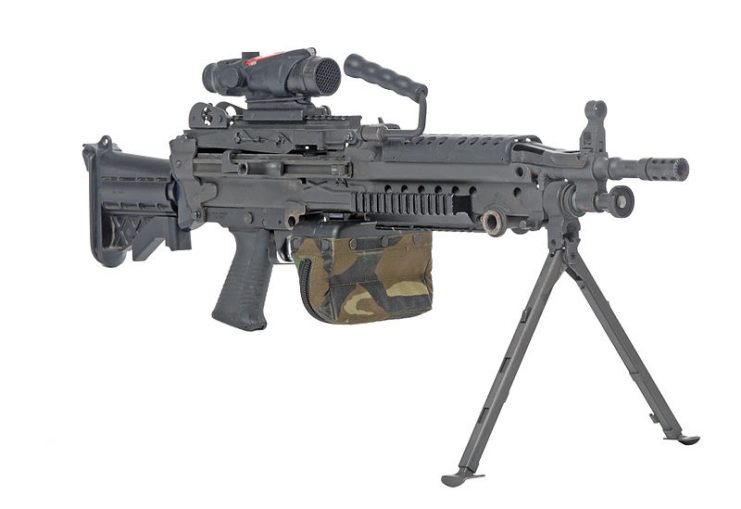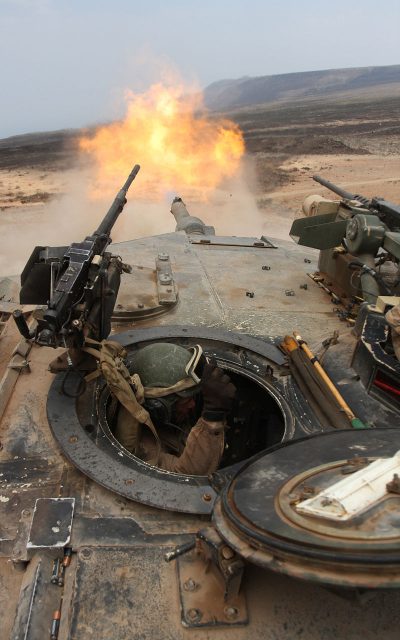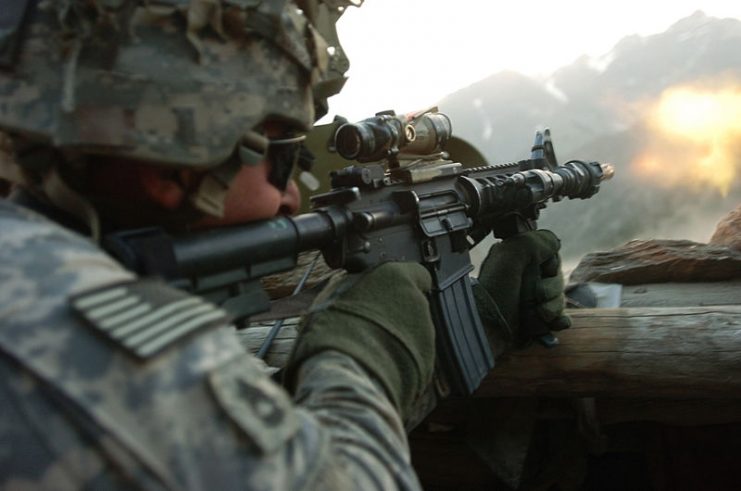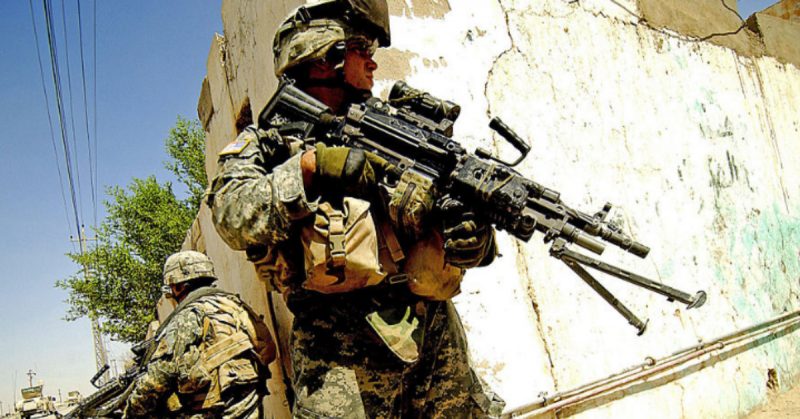The new weapon have a deadly effect at long ranges, such as when fighting from mountaintop to mountaintop in Afghanistan.
Several months ago, the US Army announced that they were in the process of developing a new assault rifle which can fire rounds that will hit targets with the impact force of a battle tank. They claimed that the bullets would defeat any body armor, and they hoped that the weapons would be ready for the battlefield in a shorter time than initially thought possible.
Colonel Geoffrey A. Norman, the force development division chief at Army HQ, said in an interview for Task & Purpose that the Army planned on deploying a Next Generation Squad Automatic Rifle (NGSAR) in fiscal year 2022 instead of the original implementation date of fiscal year 2025.
The new weapon is a replacement for the M249 SAW. While the Army has yet to set out the official requirements for the new system, it is anticipated that the weapon will be lighter, have a greater range, and pack far more punch than the current infantry weapons.

Norman said that the most important new feature would be the significantly increased chamber pressure to ensure that the rounds fired will penetrate all known body armor at a distance of up to over 1,900 feet (600 meters). The aim is to equip the service members in the field with an automatic rifle that fires a bullet at a pressure equivalent to that at which a tank would fire.
The chamber pressure for rifles currently in use is approximately 45KSI (kilopound per square inch), or 45000 PSI. The Army anticipates that the new weapon will have a chamber pressure of 60-80 KSI, which is the chamber pressure exhibited by an M1 Abrams tank.

The Next Generation Squad Weapons Program consists of the NGSAR along with a Next Generation Squad Carbine (NGSC) and a squad designated marksman’s rifle. Also included in the program are specialized ammunition and a fire control system.
The Army previously focused its efforts on developing an improved carbine that still fired rounds between 6.5mm and 6.8mm to supersede the M4, but have now shifted priorities toward a beefy and highly efficient automatic NGSAR.
The reason behind this shift, according to Norman, is that the Pentagon is moving its focus from the close quarters combat of Iraq and Syria to the mountainous terrain of Afghanistan. The carbine is ideally suited to the brawls of urban environments such as Mosul, but the long-range requirements of taking on ISIS and the Taliban in Afghanistan require a very different type of weapon.
Norman said that for the past decade the Army had focused on weapons to provide lethal effects on unprotected targets, but now the view has changed. The American soldier needs a weapon that is effective against protected targets, and they also have to have a deadly effect at long ranges, such as when fighting from mountaintop to mountaintop in Afghanistan.

The beefed-up rifle is intended for this purpose and prototypes are currently undergoing testing at Fort Benning in Georgia by the Soldier Lethality Cross-Functional Team. Initially, the weapon will fire the 7.62mm XM11158 Advanced Armor Piercing (ADVAP) round while new specialized rounds are under development.
In April 2017, Gen. Mark A. Milley testified to Congress that the current 5.56mm round does not have the mass to penetrate the body armor worn by the enemy. The alternative would normally be the 7.62mm round, but it is too heavy and has insufficient propellant to travel either fast or far enough to serve the Army’s requirements, so the answer lies between the two.
The system that will make all the difference and be the heart of the rifle will be the fire control system, which is being developed independently. It is touted as a miniature version of the systems currently in use by ground vehicles and aircraft.

Read another story from us: Scoping Out The Best Sight For The AR-10 Rifle
While the Army’s target of fielding at least two of the new weapons in each squad by 2022 may seem a little ambitious, no one is disputing that the new rifle is sorely needed. Norman noted in the interview that they received the support of the Secretary of Defense and Congress for the new weapon as part of their review of the Army’s combat strategy portfolio.
The Army is aware that it cannot replace all of its 80,000 SAW rifles immediately, but intends to get the new variant out to the field as soon as possible.
